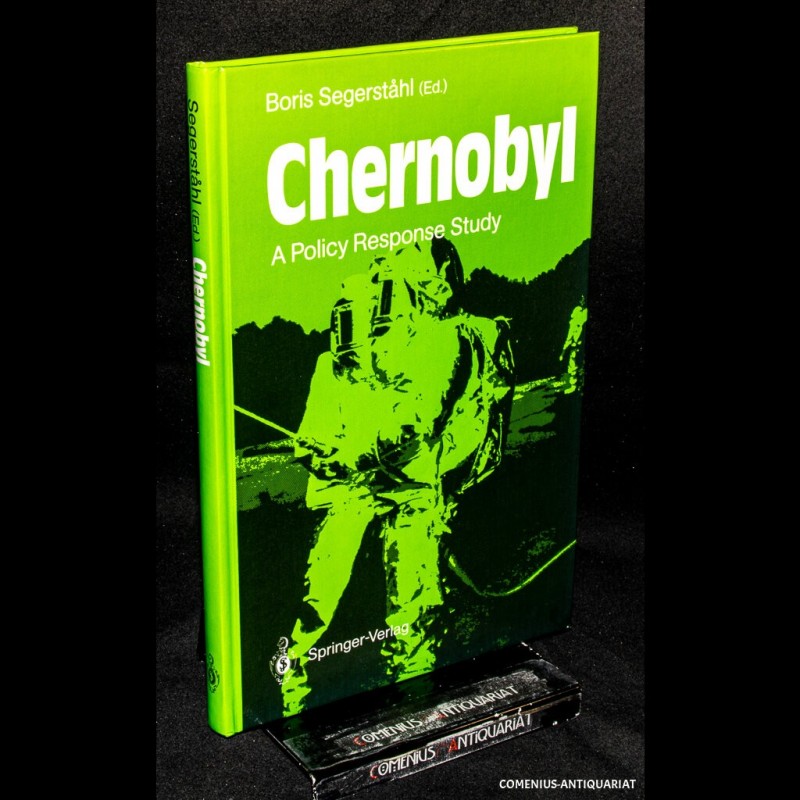Segerstahl, Boris [ed.],
Chernobyl. A Policy Response Study. Berlin u.a.: Springer, 1991. 180 Seiten. Pappband (gebunden). Grossoktav. 241 x 160 mm.
* Stempel auf dem Vorsatzblatt.
Bestell-Nr.158436 | ISBN: 3-540-53465-2
Segerstahl |
Soziologie |
Psychologie |
Europa Europe |
Atomkraft |
Nuclear Accident
Chernobyl: A Policy Response Study reports on how regions, countries, and Europe as a continent responded to the Chernobyl accident.The responses of society to traumatic disasters which change the whole pattern of life on a continent for an extended time period are discussed.
"It is highly important to talk about Chernobyl.This accident should not become taboo, an isolated freak occurrence that never should have happened and that should be ignored. Such social amnesia is a risky outcome of the credibility crisis.To reduce this risk, effort should be made to ask important questions: Can we realize all the implications of the accident at Chernobyl? Can we be better prepared for the next occurrence?"This scientific study is coauthored by a group of prominent scientists from several European countries, who had as their common goal a wish to give a lucid view of the status of scientifically validated knowledge on the risk responses in Europe after Chernobyl.
ISBN 3-540-53465-2
ISBN 0-387-53465-2
1 Introduction.- 1.1 Other Accidents.- 1.2 The Costs.- 1.3 Factual Description.- Notes.- References.- 2 Monitoring and Assessment.- 2.1 A Historical Review.- 2.2 Design of Monitoring Systems.- 2.3 Assessment.- 2.4 Communications.- 2.5 Monitoring Networks and Assessment in Five European Countries.- References.- 3 Health Effects: Potential Long-Term Consequences in Europe.- 3.1 Biological Effects of Radiation.- 3.2 Radiation Protection Principles.- 3.3 Impact of the Chernobyl Accident on Europe’s Population.- 3.4 Conclusions.- Addendum.- References.- 4 Agriculture and Trade.- 4.1 Derived Reference Levels for Radioactivity in Foods.- 4.2 Reaction of the European Community.- 4.3 Reactions of Other European Countries.- 4.4 Measures Taken by Non-European Countries.- 4.5 Effects on Trade and Agriculture.- 4.6 Costs of Chernobyl.- 4.7 Lessons to be Learned.- References.- 5 The International Response: Prospects for a Nuclear Safety Regime.- 5.1 International Organizations and Nuclear Safety after TMI.- 5.2 International Response to the Chernobyl Accident.- 5.3 An International Nuclear Safety Regime.- 5.4 Summary.- Notes.- References.- 6 Perception of a Secondhand Reality.- 6.1 Defining Perception.- 6.2 Perception of Chernobyl.- 6.3 Investigating Perception.- 6.4 The Perception of Chernobyl as a “Social Accident”.- 6.5 Conclusion.- References.- 7 The Media and Crisis Management.- 7.1 Communication Needs and Government Responses.- 7.2 Common Communications Problems.- 7.3 Discussion and Conclusions.- 7.4 Recommendations.- References.- 8 The Credibility Crisis.- 8.1 Introduction: Something Worse than the Bad News.- 8.2 The Chernobyl Accident as a Human-made Disaster.- 8.3 The Uniqueness of Nuclear Disasters.- 8.4 The Future of a Credibility Crisis.- 8.5 Conclusions.- Note.- References.- Appendix: Concepts, Unit, and Terminology.





 frais de transport
frais de transport
 Google Mail
Google Mail
